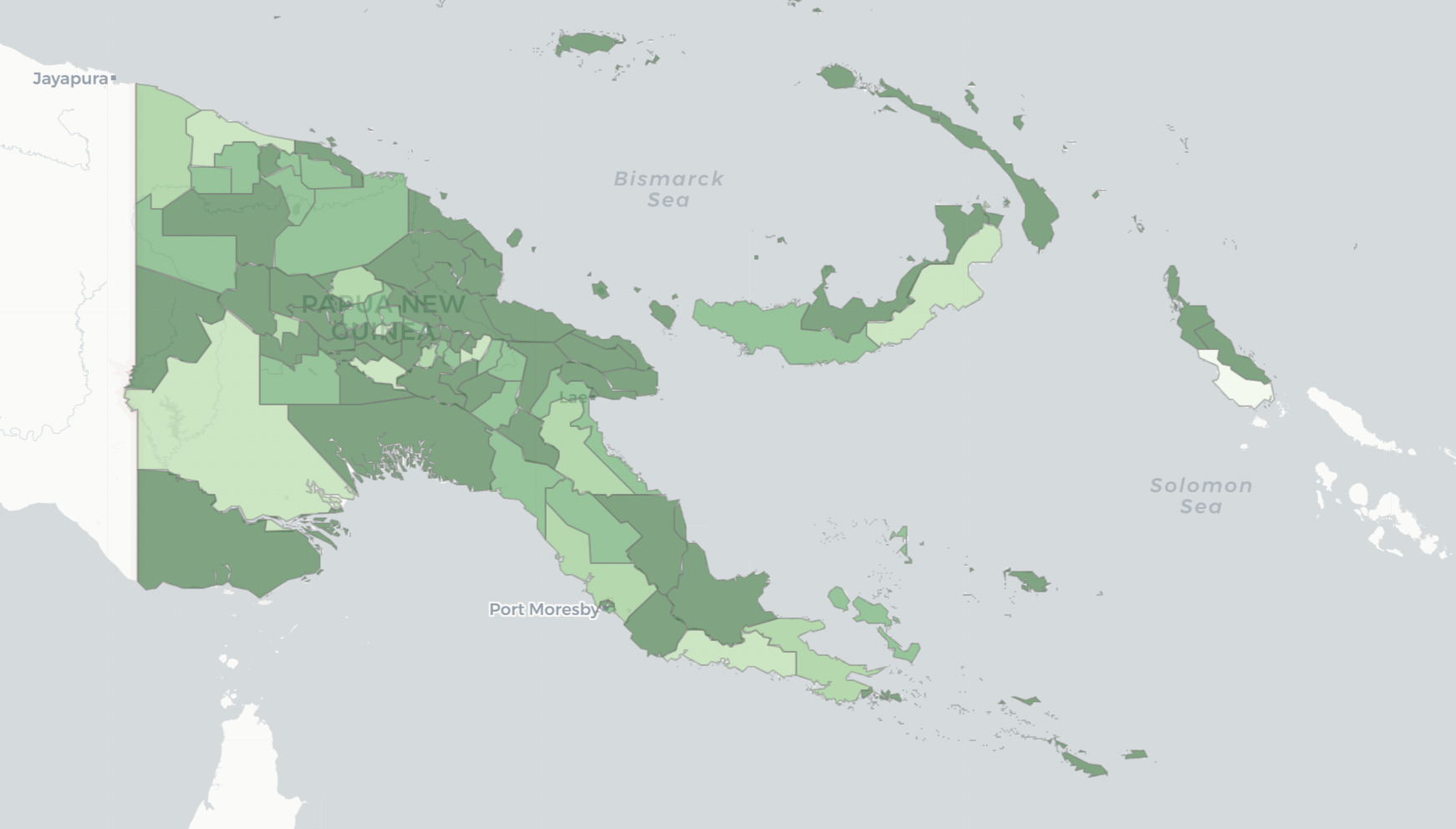Papua New Guinea’s electoral system on the surface looks quite similar to the system we have in Australia, with preferential voting and single-member electorates. But the dynamics of the party system and how voters use the system mean that the voting system works very differently.
Parties are weak, with frequent and large-scale party hopping. Ballot papers are large, and winning candidates don’t tend to win a majority of the vote, even after the distribution of preferences. Some candidates get elected on very small shares of the vote.
When candidates get elected on relatively small shares of the vote, it makes their position in parliament less stable. A small shift in preference flows or the unifying of the vote behind an opponent can easily see them lose their seat. And you can see that play out by looking at how many incumbents are re-elected at each election. Less than half of incumbent MPs who contest an election are re-elected, producing parliaments that look quite different after every election.
First up, this chart shows the number of MPs re-elected or not elected (and thus the number who did not contest the election) over time.
The last election which saw a majority of incumbent MPs who contested the election re-elected was in 1997. Once you factor in retirements, there's never been an election which returned a majority of the previous parliament.
Usually about half of all re-contesting MPs are re-elected, although 2002 was a dramatic election which saw barely a quarter of all re-contesting MPs re-elected.
This phenomenon is paired with a party system where MPs regularly switch parties and doesn't really exist outside parliament. Parties are temporary units for assembling governments, and are not really used as a cue for voters. It results in a parliament with loose and regularly shifting lines of allegiance.
I thought I would dive a bit deeper into the question of re-election. Are there geographic trends about which seats tend to re-elect MPs, as opposed to those seats which have changed hands more recently?
It's difficult to be completely confident in this data, but to the best of my understanding it appears that of the 111 MPs elected in 2017, just fifteen had held seats continuously since prior to 2012, although quite a few others had left and re-entered the parliament since 2012.
Using the PNG Elections Database, I've tried to identify the last time an electorate changed hands, up to and including the 2017 election. This ignores by-elections, so if a seat changed hands at a by-election and then stayed in the hands of a new incumbent, it won't be considered to have changed hands.
By my count, 62 seats last changed hands in 2017 (ignoring post-2017 by-elections). Another 30 last changed hands in 2012. Nine seats last changed hands in 2007, eight in 2002, and just one in 1997 and one in 1992.
South Bougainville last changed hands at a general election in 1992, when Michael Laimo won the seat. Steven Prika Kamma won the seat in 2012 and Timothy Masiu in 2017, but they were coded as independents, so I assume this means by-elections had been held.
Peter Ipatas has held Enga Provincial continously since 1997, which appears to be the longest continuous occupation, although Michael Somare had held East Sepik Provincial from at least 1972 until his retirement in 2017.
I can't see any particularly clear patterns in this map, but perhaps you can?
That's it for this blog series. If there is other interesting data you think I should analyse, let me know. For now, I'm going back to writing my guide to the NSW state election.



